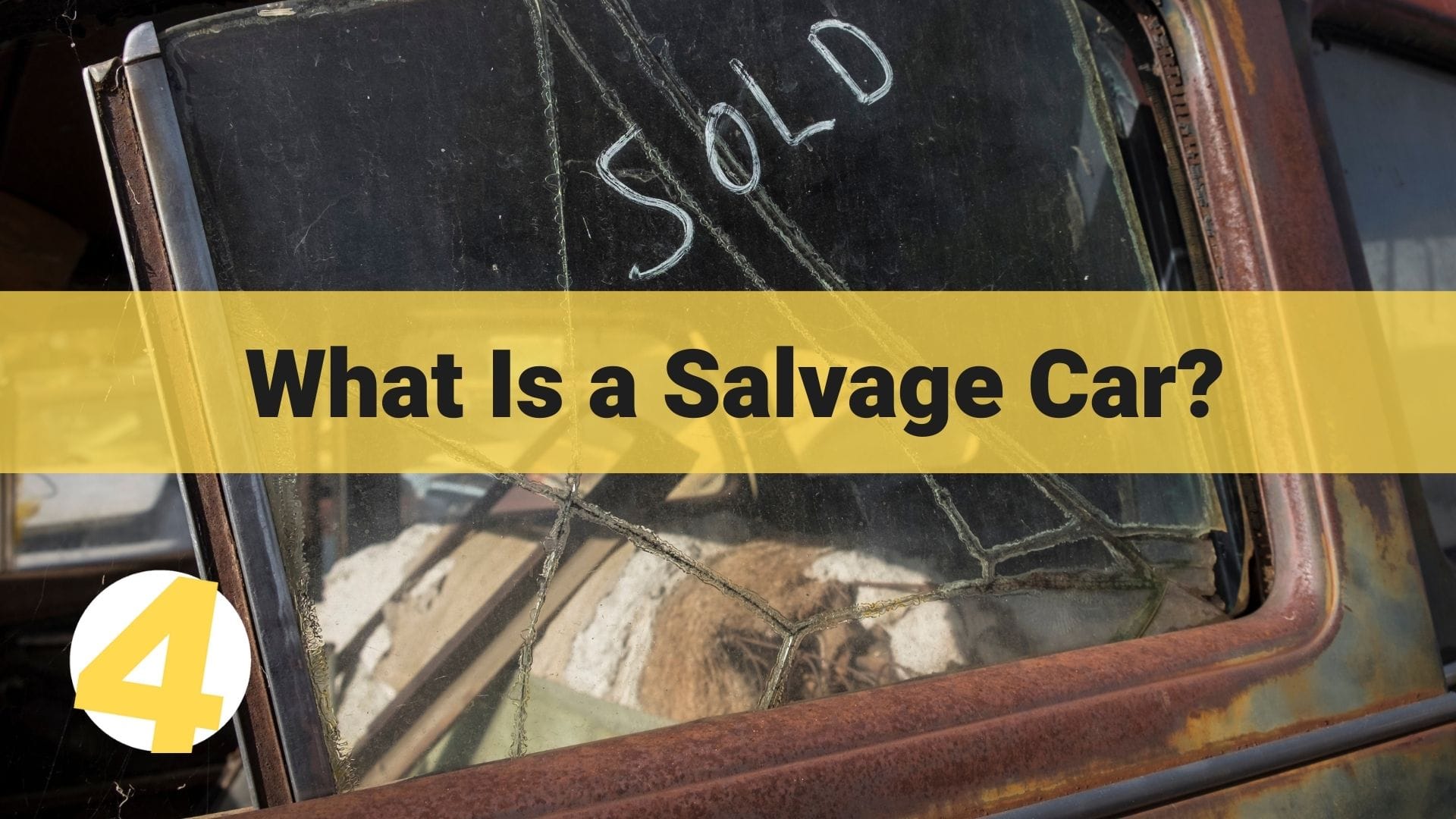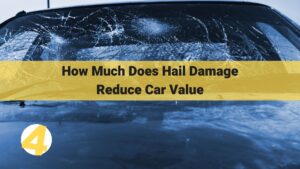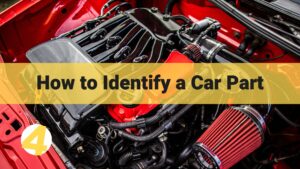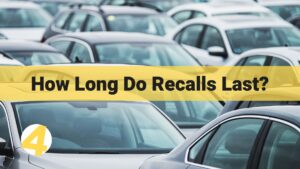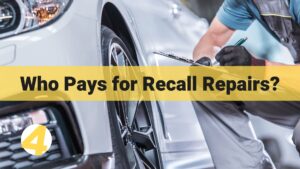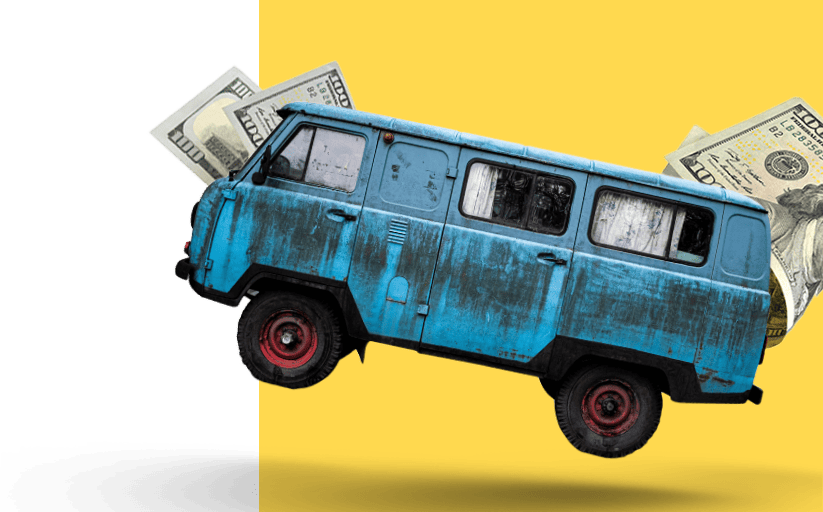A salvage car is a vehicle that has sustained significant damage or loss, which makes its repair costs higher than its pre-damage market value. For this, insurance companies label it as “totaled” or “written off.” These vehicles receive a salvage title to indicate their status.
Curious about salvage cars? Continue reading to understand more.
What Is a Salvage Car?
A salvage car refers to a vehicle that has experienced significant damage to the extent that insurance companies deem it more economical to label it as a total loss rather than pay for its repairs. This categorization doesn’t necessarily mean the car is beyond repair or cannot be driven again. It simply means the cost of fixing it surpasses its value before the damage.
When a car undergoes serious damage – be it from a collision, natural disaster, or even theft – and the insurance company assesses it, they might conclude that the repair costs would exceed a certain percentage of the car’s value. This percentage varies, but commonly, if repairs are estimated at anywhere from 50% to 90% of the car’s value, it could be branded as salvage.
However, it’s essential to know that not all salvage cars have met disastrous ends. Some vehicles might have minor frame damage but are older models. This makes their pre-accident value lower. In these cases, even small damages could label them as salvage. Similarly, stolen cars that are later recovered can also be given a salvage title if they’ve been gone for a long time, regardless of their physical condition.
Different jurisdictions have their own terminologies. For instance, once a salvage car has been repaired and inspected, it might be given a “rebuilt title,” which indicates it’s roadworthy. However, it’s important to distinguish between a “salvage title” and a “rebuilt title,” as the latter indicates the car has been restored to a drivable condition.
Why Does a Car Receive a Salvage Title?
The issuance of a salvage title to a vehicle is a result of specific events or circumstances that render the vehicle a total loss from an economic standpoint. Here are the most common reasons why a car may receive a salvage title:
Accidents
This is the most typical reason for a salvage designation. If a vehicle is involved in a severe collision and sustains significant damage, repair costs might exceed the vehicle’s current market value. For example, a car with a market value of $10,000 that incurs $8,000 in damages could be deemed a total loss and thus receive a salvage title. It all depends on the insurance company’s threshold.
Flood Damage
Natural disasters, especially floods, can wreak havoc on vehicles. Floodwaters can infiltrate engines, transmissions, and other crucial parts of a car. Water damage can also result in long-term problems like mold, corrosion, and electrical malfunctions.
Theft Recoveries
If a stolen vehicle isn’t recovered quickly, the insurance company might pay out the claim, assuming the car is lost for good. However, if the vehicle is found later, it’s typically branded with a salvage title, especially if it has sustained damage or if its condition is uncertain.
Fire or Vandalism
A vehicle can also receive a salvage title if it has been extensively vandalized or damaged by fire. The costs of addressing either can sometimes outweigh the value of the vehicle, especially if its internals are affected.
Hail Damage
In areas prone to severe weather, hail can significantly damage a vehicle. This can result in numerous dents and shattered windows. Though the car might still run perfectly, the cosmetic repair costs can be substantial.
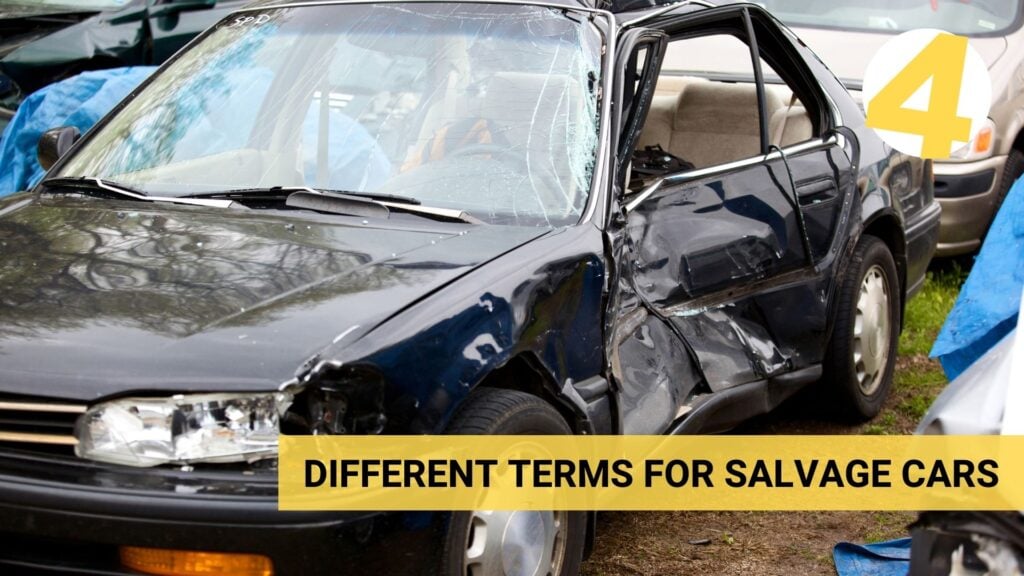
Different Terms Used for Salvage Cars in Different Regions
Around the world, and even within countries, different terminologies describe vehicles that have sustained significant damage. It’s important for potential buyers or sellers to be familiar with these terms, as they can impact the vehicle’s value, insurability, and legality on the road.
Salvage Title
This is the most commonly used term in the U.S. to describe a car that has been deemed a total loss by insurance companies due to significant damage or other reasons outlined above.
Rebuilt Title
If a salvage vehicle undergoes repairs and passes specific inspections, it can be rebranded with a “rebuilt title.” This means the car is now considered roadworthy. However, it will always carry the history of being a salvage vehicle, which can affect its value and insurance.
Cat S and Cat N (UK)
In the UK, vehicles with significant structural damage are labeled as “Category S” (previously Cat C), while those with non-structural issues are “Category N” (previously Cat D). Both indicate varying levels of damage, with Cat S being more severe.
Write-off (Australia)
In Australia, a “write-off” is a vehicle deemed too costly to repair compared to its market value. Similar to a salvage title, it indicates that the car has faced significant damage.
Repaired Write-off
If a written-off vehicle in Australia is repaired, it’s labeled as a “repaired write-off.” This term informs potential buyers that while the vehicle has been fixed, it was previously considered a total loss.
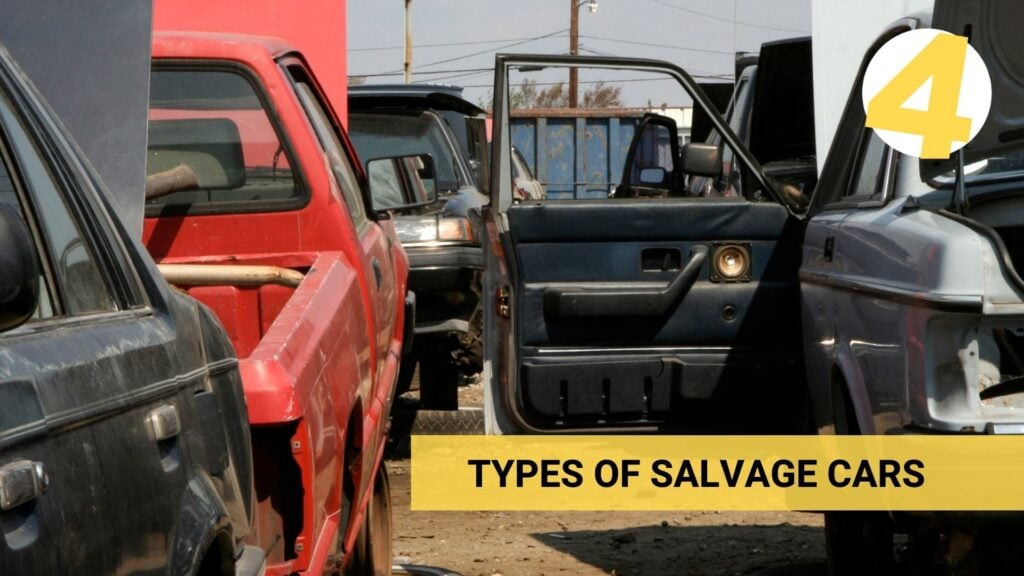
Types of Salvage Cars
Salvage cars can be classified into various categories based on the extent of their damage and their potential usability.
1. Rebuilt Salvage
These are vehicles that were once deemed salvage but have since undergone significant repairs and restorations. They have been inspected by relevant authorities and have met the criteria to be considered roadworthy once again.
While these cars have been fixed, they still carry the “rebuilt” label, which can influence their resale value and insurability. Buyers should be cautious and ensure thorough inspections and understanding that the car’s history might impact future sales or insurance premiums.
2. Repairable Salvage
These are vehicles that have sustained damages, but not to the extent that renders them irreparable. The costs of repairs might be high relative to the car’s value, but with the right investment, they can be brought back to a drivable condition.
Repairable salvage vehicles can be attractive for buyers looking for a project or those with access to affordable repair services. It’s essential, however, to get a clear estimate of repair costs before purchasing. While there’s potential to save money initially, the cumulative costs of repairs might add up.
3. Parts-Only Salvage
These vehicles are typically so extensively damaged that they aren’t considered feasible for repair to a drivable state. However, they still contain parts that are in good condition and can be harvested for use in other vehicles.
These cars aren’t for those looking to invest in a drivable vehicle. Instead, they’re suitable for auto mechanics, dealers, or enthusiasts who are seeking specific parts. It’s a way to obtain genuine parts at a fraction of the cost of new ones. Buyers should have a clear idea of the parts they need and their compatibility with other vehicles.
Buying or Selling Salvage Cars
Salvage cars can be an attractive option for a range of buyers, from those looking for a project to restore to others seeking a more affordable vehicle or even parts dealers. However, buying a salvage car requires a slightly different approach than purchasing a regular used car.
The Process of Buying a Salvage Car
Step #1: Research and Locate
Begin by researching online platforms, salvage car auctions, and local dealerships that specialize in salvage vehicles. Websites dedicated to salvage car auctions provide extensive listings, while some dealerships might offer a mix of both salvage and used cars.
Ensure you’re clear on your objectives. Are you looking for a repair project, a parts source, or a vehicle to rebuild and drive?
Step #2: Vehicle History Report
Once you identify a potential purchase, obtain a vehicle history report using the car’s VIN (Vehicle Identification Number). This report will provide details on the damage sustained, previous owners, and other vital information that can influence your decision.
Step #3: Physical Inspection:
Never buy a salvage car without inspecting it physically. If you’re not well-versed in automotive mechanics, consider hiring a professional to accompany you. Check for structural damages, engine and transmission health, and any signs of rust or water damage. For those considering a repair project, take this opportunity to estimate the extent of repairs required and their associated costs.
Step #4: Pricing and Negotiation
Determine a fair price. Salvage cars, by their nature, will be priced lower than their non-salvage counterparts. But factors like the extent of damage, age, make, model and repair costs play a significant role in pricing.
Negotiate based on the findings of your inspection and the estimated repair costs. Be prepared to walk away if the price doesn’t align with the vehicle’s condition or your budget.
Step #5: Title and Registration
Ensure you obtain the salvage title upon purchase. Depending on your region, once repairs are made, you might need to get the car inspected by authorities to change its title from “salvage” to “rebuilt” or a similar designation, making it legal to drive.
Step #6: Insurance Considerations
Before sealing the deal, check insurance options for the salvage car. Some insurers might only offer limited coverage, while others may refuse to insure it altogether.
Considerations When Selling a Salvage Car
Selling a salvage car presents its unique set of challenges and considerations. Here’s what you need to know:
Transparent Pricing
Understand that a salvage title significantly reduces a car’s market value. Be realistic and transparent about your pricing. Research similar salvage cars in your area to determine a competitive price.
Full Disclosure
Clearly disclose the extent of the damage, the repairs done, and any lingering issues. This builds trust with potential buyers and can prevent future disputes.
Advertise Effectively
Highlight any repairs or restorations you’ve made. Use platforms that cater to salvage car buyers, such as specialized websites or local bulletin boards.
Provide Documentation
Gather all relevant paperwork, including the salvage title, repair invoices, and inspection reports. Having these on hand can answer many questions a potential buyer might have.
Emphasize the Positive
While it’s essential to disclose any damages or issues, also highlight the car’s strengths. Perhaps it has a relatively low mileage, or maybe you’ve installed new parts during repairs.
Consider Selling Parts Separately
If the car isn’t in drivable condition, or if you find it challenging to sell as a whole, consider dismantling it and selling valuable parts separately. This can sometimes yield a higher total return than selling the car as a unit.
Salvage Titles and Insurance
Insurance is a crucial aspect of owning any vehicle, and when it comes to salvage cars, there are unique considerations to be aware of. Salvage titles can significantly impact the insurance landscape for a vehicle, often complicating the process of obtaining coverage or influencing the type of coverage available.
Limited Coverage Options
Many insurance companies are hesitant to offer comprehensive or collision coverage for salvage vehicles due to the inherent risks associated with their history. Typically, they might only provide liability coverage to ensure that any damages you cause to other vehicles or property will be covered, but damage to your own vehicle may not be.
Higher Premiums
Even if an insurer agrees to provide comprehensive or collision coverage, the premiums may be higher than for a comparable non-salvage vehicle. This is due to the perceived higher risk associated with salvage cars.
Actual Cash Value (ACV)
In case of a future claim, insurance companies usually determine a vehicle’s worth based on its Actual Cash Value (ACV). Given that salvage cars have a reduced market value, the payout from an insurance claim can be significantly lower than one might expect.
Safety Concerns
Insurers often have reservations about the safety and reliability of salvage vehicles. A car that has been in a severe accident or flood could have hidden damage that makes it more prone to future accidents or malfunctions.
Inspection Requirements
Some insurance companies might agree to insure a salvage vehicle but only after a thorough inspection by a certified mechanic or body shop. This is to assess the quality of repairs and determine the current condition of the vehicle.
Disclosure is Essential
It’s crucial to be upfront about your car’s salvage status when seeking insurance. Failure to disclose this can lead to denial of claims or even policy cancellation.
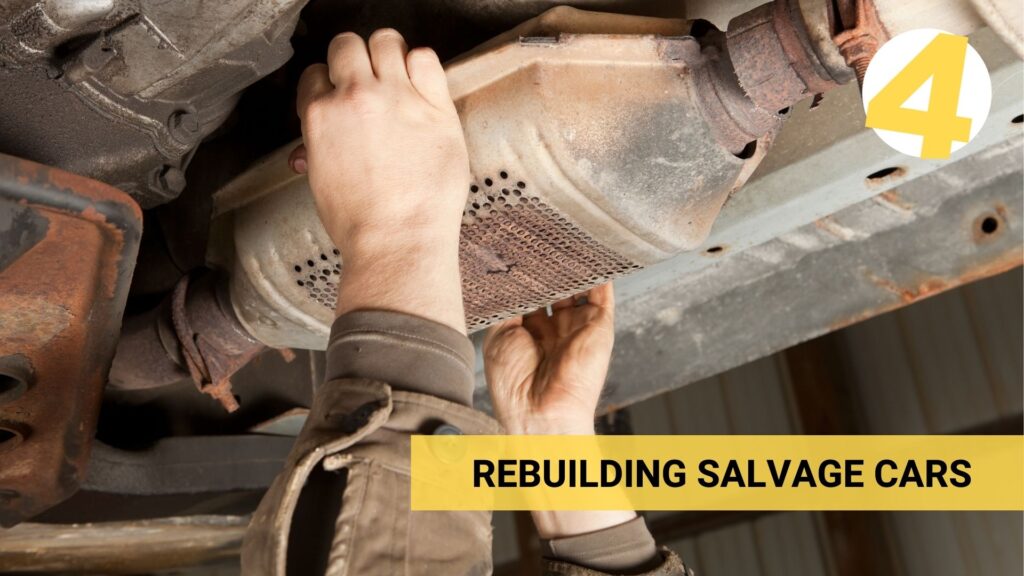
Rebuilding Salvage Cars
Rebuilding a salvage car offers a unique opportunity to breathe new life into a vehicle that has faced significant damage. Whether it’s the allure of a DIY project, the potential cost savings, or the satisfaction of resurrecting a once-damaged vehicle, the process of rebuilding can be both challenging and rewarding.
However, to ensure a successful rebuild, understanding the process and being aware of the legal and safety implications is crucial.
Assessment and Evaluation
Begin by thoroughly assessing the damage to the vehicle. This will provide insight into the extent of repairs required, parts needed, and an estimate of the overall cost. It’s essential to determine whether the rebuild is financially viable or if the damages are too extensive.
Sourcing Parts
Depending on the extent of the damage, you’ll need to source replacement parts. This could range from mechanical components to body panels. It’s possible to find parts from scrap yards, dealerships, or even online marketplaces.
Body and Structural Repairs
If the vehicle has suffered significant body damage, this step involves repairing or replacing body panels, realigning the frame, and addressing any structural issues.
Mechanical Repairs
Address engine, transmission, and other mechanical issues. Replace or repair damaged components to ensure the vehicle is mechanically sound.
Electrical and Interior Repairs
Fix any damaged electrical systems, replace damaged interiors, and ensure all electronic components, from lights to infotainment systems, are functional.
Safety Checks
Ensure all safety systems, including brakes, airbags, seat belts, and lights, are in working order and meet safety standards.
Testing
Once repairs are completed, test drive the vehicle to ensure everything runs smoothly. Check for any unusual noises, vibrations, or performance issues.
Inspection and Certification
Most regions require a rebuilt salvage car to undergo an inspection before it can be registered and driven. This ensures that the vehicle meets safety and emissions standards.
Legal Requirements and Safety Considerations
Retain all receipts and records of repairs and parts purchases. This will be crucial when applying for a rebuilt title or when selling the car in the future.
When selling a salvage or rebuilt vehicle, sellers are generally required to disclose the car’s history to potential buyers. Transparency is paramount, as failure to disclose can lead to legal consequences.
Some regions might impose restrictions on the use of salvage or rebuilt vehicles. For instance, certain jurisdictions might prohibit the use of these vehicles as taxis or rental cars.
In many areas, salvage cars (those not yet rebuilt) cannot be registered for use on public roads. Only once they’re repaired, inspected, and rebranded as “rebuilt” can they be registered and licensed for regular use.
The specifics of these regulations can vary widely by country, state, or even city. For example, in some parts of the U.S., a salvage car must undergo a “salvage inspection” by state officials before it’s allowed back on the road. European countries might have different criteria for what constitutes a salvage vehicle, and the rebuilding process can differ.
In Australia, each state and territory has its own set of regulations governing salvage vehicles, from the definition of a “repairable write-off” to the inspection requirements.
Given the variability in regulations, it’s crucial for owners to consult with local authorities or relevant automotive agencies to understand the exact requirements and processes for their specific region.
Financing Options for Salvage Car Purchases
Financing a salvage car isn’t as straightforward as securing a loan for a new or used vehicle with a clean title. Due to the inherent risks associated with salvage cars, many traditional lenders steer clear from offering loans for such purchases. However, if you’re determined, there are ways to try:
Personal Loans
Unlike auto loans, personal loans are not secured against the vehicle. This means lenders don’t focus on the car’s status but rather on your creditworthiness. If you have a good credit score, you might qualify for a personal loan to buy the salvage car. The downside is that personal loan interest rates can be higher than traditional auto loans.
Credit Unions
Credit unions, especially local ones, might be more flexible than national banks when it comes to financing unconventional purchases. If you’re a member of a credit union, it’s worth approaching them to discuss your needs. They might offer a loan if they believe in the value of the car and your ability to repay.
Online Lenders
With the rise of digital finance platforms, there are now online lenders that specialize in niche financing areas, including salvage cars. Some might offer loans specifically tailored for salvage car purchases. However, always review the terms and interest rates to ensure they’re favorable.
Dealer Financing
Some dealerships that specialize in salvage cars might offer in-house financing. These can be more lenient with approval but may come with higher interest rates. Always read the fine print and understand the terms before committing.
Home Equity Line of Credit (HELOC)
If you have significant equity in your home, you could consider taking out a HELOC. This credit line, secured against your home’s value, can be used for various purposes, including buying a salvage car. This option requires careful consideration due to the risk of using your home as collateral.
Cash Payment
While not a financing option per se, paying cash avoids the challenges of finding a willing lender. If you have the funds available, this can be the simplest and most straightforward method to purchase a salvage car.
Transform Your Salvage Car Knowledge into Action!
Understanding the ins and outs of salvage cars provides potential buyers and sellers with valuable insights into the automotive world. While salvage cars come with their own set of challenges, they also present opportunities. Whether it’s a budget-friendly option for the DIY mechanic or a chance to invest in a restoration project, salvage cars have their place in the market.
For those looking to offload a salvage vehicle or any other car, it’s important to partner with a reputable and experienced company like Cash4Cars. We at Cash4Cars offer straightforward pricing, free pickup, and the unparalleled “Get Paid On The Spot” policy. The goal is to simplify the car-selling process and make it efficient, rewarding, and hassle-free.
With Cash4Cars, you’re not just getting rid of an unwanted vehicle; you’re engaging in a streamlined experience that values your time and ensures convenience. So, if you’re contemplating what to do with that old or damaged car in your garage, don’t let it gather more dust. Turn it into instant cash with Cash4Cars, where your car, regardless of its make, model, or condition, finds genuine value.
Ready to get cash for junk cars? Contact Cash4Cars today and start your hassle-free selling journey!

